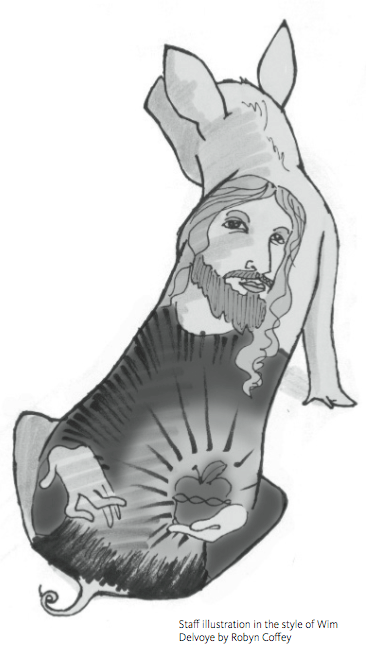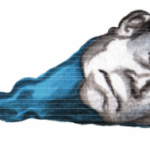Should free speech protect images of animal cruelty?
By Amelia Ishmael
Robert J. Stevens has been sentenced to three years imprisonment. His crime? Selling videos Stevens, a Virginia-based author and documentary film producer was sentenced in 2005 for selling three educational videos titled Catch Dogs and Country Living, which were intended for use in the training of hunting dogs. The key evidence against Stevens was the inclusion of a historical clip of a dogfight filmed in Japan. Federal law makes it a crime to create, sell, or possess images depicting animal cruelty for commercial gain.
In July, the College Art Association joined with the National Coalition Against Censorship in support of Stevens’ appeal to the U.S. Supreme Court. They argued that the 1999 law Stevens violated—Section 48 of Title 18—is not only unconstitutional but is a threat to artists, art historians, scholars, curators, conservators, collectors, educators, art publishers and other visual arts professionals.
The law in question was developed to help prevent animal cruelty by removing economic incentives. Critics say the law puts depicting animal cruelty in the same category as child pornography, criminalizing not only the acts, but also images of the acts.
Although the law exempts any expression of speech “that has serious political, scientific, educational, historical or artistic value,” critics worry about leaving the interpretation of serious value to prosecutors or juries. The brief by the CAA and NCAC say that the law places artists such as Hermann Nitsch, Adel Abdessemed and Wim Delvoye at risk of criminal prosecution. Hermann Nitsch is an Austrian performance artist whose work has included a crucified lamb. Adel Abdessemed is an artist based in New York who exhibited a video of animal fights earlier this year at the David Zwirner Gallery; a solo show of his work at the San Francisco Art Institute was canceled after protests by Bay Area animal rights groups. Wim Delvoye is a Belgian artist whose work includes tattooing pigs with images such as the Virgin Mary, the Louis Vuitton logo and Disney characters.
In addition the law could also be used against curators, publishers, collectors, and educators who reproduce images of these artists, exhibit their work with commercial interests, or own one of the artworks they create which include images of animals.
As they mention in the brief, “There is a real risk that prosecutors and jurors will fail to recognize the ‘serious value’ of conceptual and avant-garde art.” They mention as examples, the reception of Marcel Duchamp’s Fountain, 1917 (originally critiqued as immoral and vulgar), and Constantin Brancusi’s Bird in Flight (which a U.S. customs officer demanded Brancusi pay taxes on, as it was classified not as a piece of art- which could not be taxed- but only as “an article of metal” in the case of Constantin Brancusi vs. The United States of America, 1927-28.
During Stevens’s trial, he claimed that the dogfight clip in this video was included to show the difference between dogs trained to hunt verses those trained to fight. There is no evidence that he had part in inciting animal mistreatment, and he said he openly discourages dogfights. Yet, the court pointed to Stevens’s video as an example of unlawful profit made off of animal cruelty. Stevens asserted that the First Amendment protected his use of the images and, in 2008, the Third Circuit Court of Appeals supported Stevens claim and struck down Section 48 of Title 18 as unconstitutional.
As the Third District Court highlighted, the First Amendment “does not require speech to have serious value in order for it to fall under the First Amendment umbrella,” and the imposition of government to assess the value of speech violates the First Amendment. Examples of the wide breadth of image uses that this law could effect include educational and cultural depictions of Spanish bull-fighting, images of hunting and fishing out of season, news reporting of animal mistreatment, major motion pictures depicting scenes where animals appear to be harmed and historical religious images including animal sacrifice. As the Third Circuit Court pointed out in their hearing, Section 48 of Title 18 targets representations of crimes as the crimes themselves, provides courts with the power to determine and define serious value subjectively, and has the extremely dangerous potential to deter even protected speech by presenting severe penalties to ambiguous situations where a prosecutor or jury might interpret an expression to lack of “serious value.”
The Supreme Court will begin a hearing to discuss the U.S. Court of Appeals for the Third Circuit’s overturn of the federal law on Tuesday, October 6, 2009.






















